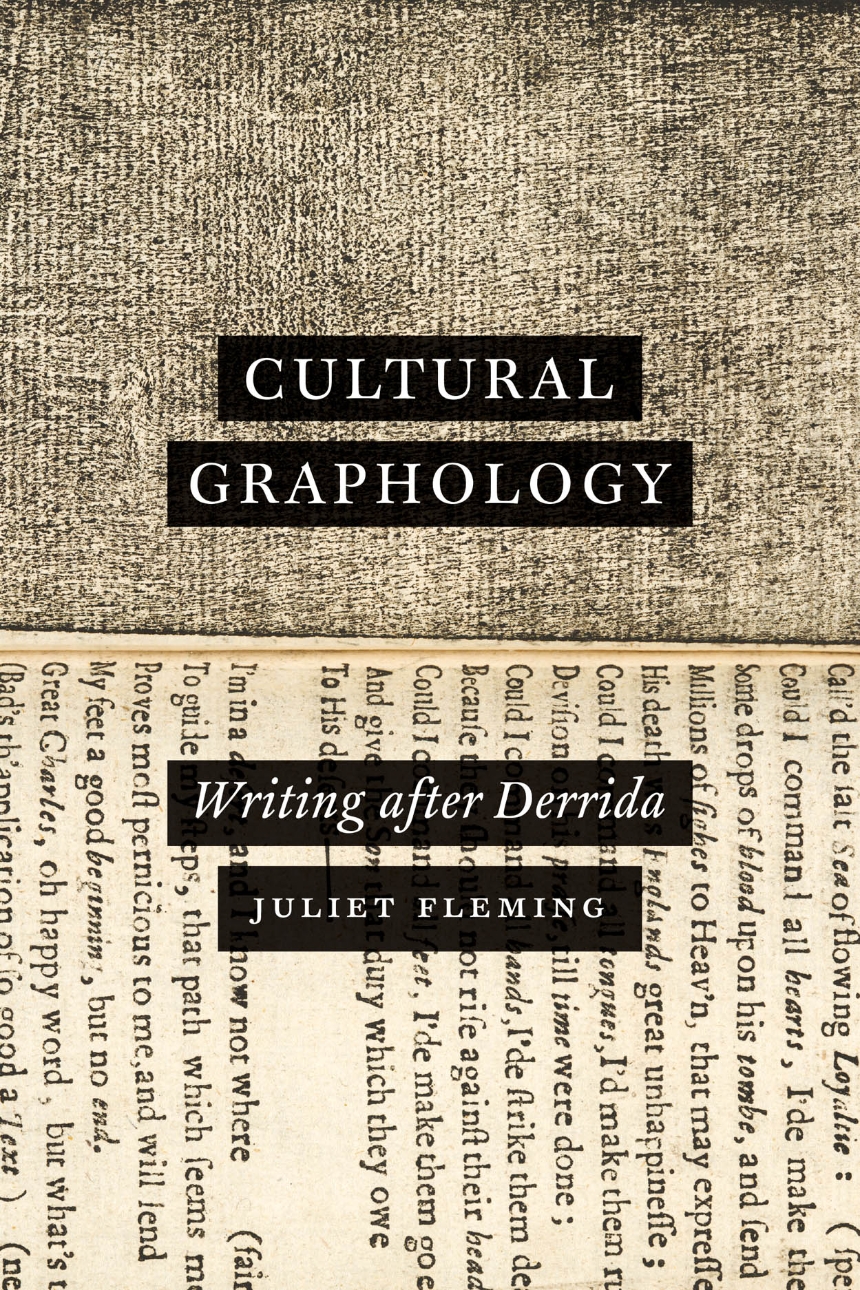Cultural Graphology
Writing after Derrida
“Cultural Graphology” could be the name of a new human science: this was Derrida’s speculation when, in the late 1960s, he imagined a discipline that combined psychoanalysis, deconstruction, and a commitment to the topic of writing. He never undertook the project himself but did leave two brief sketches of how he thought cultural graphology might proceed. In this book, Juliet Fleming picks up where Derrida left off. Using both his early and later thought, and the psychoanalytic texts to which it is addressed, to examine the print culture of early modern England, she drastically unsettles some key assumptions of book history.
Fleming shows that the single most important lesson to survive from Derrida’s early work is that we do not know what writing is. Channeling Derrida’s thought into places it has not been seen before, she examines printed errors, spaces, and ornaments (topics that have hitherto been marginal to our accounts of print culture) and excavates the long-forgotten reading practice of cutting printed books. Proposing radical deformations to the meanings of fundamental and apparently simple terms such as “error,” “letter,” “surface,” and “cut,” Fleming opens up exciting new pathways into our understanding of writing all told.
Fleming shows that the single most important lesson to survive from Derrida’s early work is that we do not know what writing is. Channeling Derrida’s thought into places it has not been seen before, she examines printed errors, spaces, and ornaments (topics that have hitherto been marginal to our accounts of print culture) and excavates the long-forgotten reading practice of cutting printed books. Proposing radical deformations to the meanings of fundamental and apparently simple terms such as “error,” “letter,” “surface,” and “cut,” Fleming opens up exciting new pathways into our understanding of writing all told.
176 pages | 12 halftones | 5 1/2 x 8 1/2 | © 2016
Literature and Literary Criticism: General Criticism and Critical Theory
Philosophy: General Philosophy, Logic and Philosophy of Language
